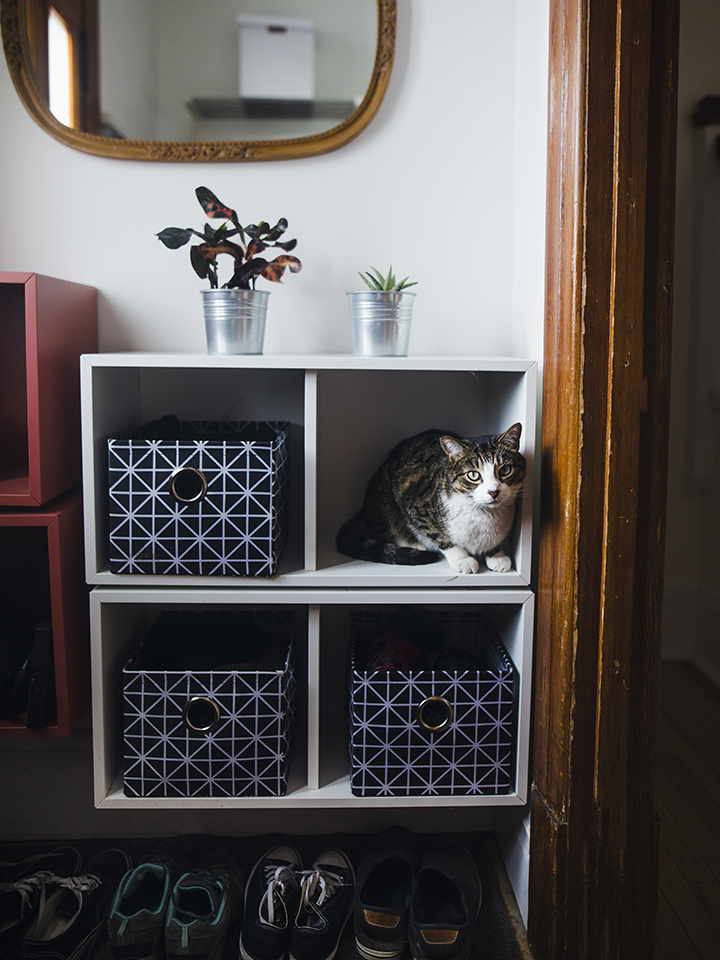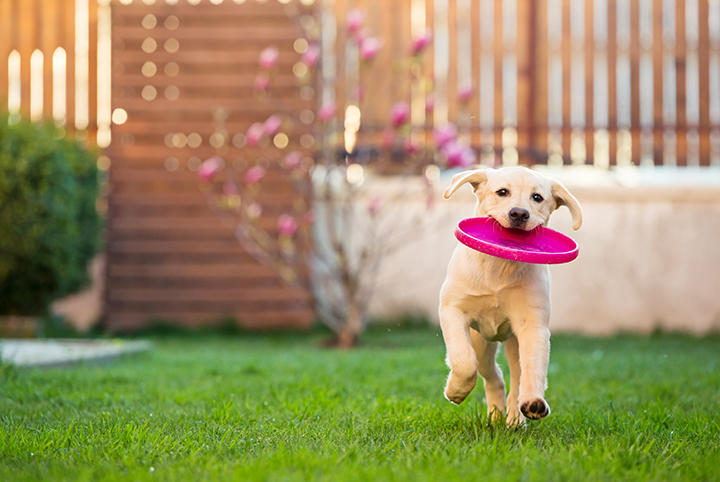
Mike Holmes is one of HGTV Canada’s go-to contractors and the host of Holmes and Holmes, Holmes: Buy it Right and Home to Win.
Our pets become part of our family. My dog Charlie is a beloved member of our family and life just wouldn’t be the same without him. Homeowners are starting to consider their furry (or feathered) family members when looking at new home designs or renovations. Whether you’re in the market for a new home or looking at renovating your current space, there are a few things to consider in order to have a pet-friendly home.

The Kitchen
Most homes have a designated eating area in the kitchen for people but a built-in eating area for our pets is just as important. Have a look around – is there any wasted space that you could utilize? The important thing is to keep food and water bowls out of high traffic areas. Your pet should have access to water throughout the day – a key reason why you’ll want to keep those bowls out of the way of traffic. Water spills can be hazardous in the kitchen, and if your pet is a messy eater and drinker, spills will happen regularly.

Mudroom
A mudroom is an ideal space for your pet and pet supplies because your pet’s bed, crate and feeding station can all be kept in there. A bench with bins underneath it for hats and scarves can also include bins for pet toys and food. Mounted storage hooks are ideal for hanging leashes and old towels (for cleaning muddy paws). If your cat likes to shred your furniture, add a scratching post to your mud room. And if you want to think outside the box, consider adding a pet washing station. An enclosed, tiled area with a removable shower head is perfect for bath time or washing off muddy paws after being outside. A downstairs laundry room can also be used for pets and pet supplies. Built-in solutions that create storage and utilize space are key.
Related: Pet-Friendly Furniture That’ll Stand Up to Your Furry Friends.
Flooring
Proper flooring is huge when keeping our pets in mind, with carpet being the worst choice. Carpet can hold pet dander and other allergens, and become stained with pet urine and muddy paw prints. Some cats like to scratch carpets too, or their claws can become caught in the carpet loop, causing it to fray or unravel. Your carpet will be destroyed in no time.

I love wood floors. They’re durable and add to the look of any room. You have two choices when it comes to hardwood flooring – solid hardwood or engineered hardwood.
Solid hardwood floors are just as they’re described – made from solid wood. The problem with them is that they shrink and expand depending on the humidity in your home. So if they’re not installed properly, they’ll either buckle (from being too tight together) or you’ll see gaps between the boards (from being too loose). Solid hardwood floors are also more prone to scratches and dents. The good thing is that, because the boards are so thick, they can be sanded down and refinished for however long the flooring is in the house.
Engineered flooring is more durable than solid wood. Because of the way it’s manufactured, it isn’t affected by humidity as much as solid wood which makes it resistant to warping. It’s also less prone to scratches and dents.
Whichever hardwood you choose, just remember that darker colours will highlight footprints and paw prints brought on by heavy traffic in your home, and are more likely to show dents and scratches. A lighter colour with a busy grain will hide a lot.
Tile is also a great flooring option. Porcelain tiles are nonporous, which makes them easy to clean and maintain. In addition, porcelain tiles have the solid colour running throughout, so if the surface chips, the colour is solid throughout. Stone tiles, however, like marble, slate and limestone, are very porous. Not a good idea if you’re constantly cleaning up after muddy paws.
You really need to do your homework when choosing your flooring with your pets in mind. Take the time to make the right choice.

Landscaping
You should always keep your pets in mind when taking care of your garden. There are many products out there that, although they may be beneficial to our lawns, can be harmful to our furry family members. Always read instructions carefully when shopping for products.
Familiarize yourself with plants that can be hazardous to pets. Plants like hydrangeas, daffodil bulbs, and rhubarb leaves are poisonous to dogs, while plants like azaleas and rhododendrons are very harmful to cats. Do your research to avoid any dangers to your beloved pets. These 20 plants are safe for your furry companions and kids alike.
Having a fully fenced yard is a must, especially for an active dog. And always make sure your pet has access to shade or shelter.
Having pets can be rewarding but there’s a lot of responsibility that goes with it. Building or designing your home with your pets in mind will ensure their safety and your enjoyment.
Images courtesy of The Holmes Group and Getty Images
HGTV your inbox.
By clicking "SIGN UP” you agree to receive emails from HGTV and accept Corus' Terms of Use and Corus' Privacy Policy.



